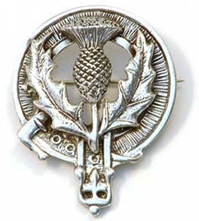|
Tiree
(Scottish Gaelic:Thiriodh) is an island in the Scottish Inner
Hebrides southwest of Coll. The main village on Tiree is
Scarinish (shown above), from which ferries sail to Arinagour on
Coll and to Oban on the mainland. Its name derives from
Tir Iodh,
'land of the corn', from the days of the 6th-century Celtic
missionary and abbot St Columba (d. 597). Tiree provided the
monastic community on the
island
of
Iona,
south-east of the island, with grain. A number of early
Christian monasteries once existed on Tiree itself, and several
sites have stone cross-slabs from this period.
Tiree is divided into 286 crofts and five
farms although there are today probably fewer than a hundred
active crofters. The land is split into thirty one crofting
townships, each controlled by a grazing committee. It is the
most fertile of the Hebrides.
The Roman occupation of northern Britain
had a stabilizing effect on the tribes of Scotland who united
against a common enemy. With the Romansí withdrawal around 400
AD, local warlords sprang up, splitting the political map.
Into this turbulent world sailed Columba
and his twelve companions, who settled on Iona in 563. Soon
afterwards, he founded a daughter monastery on Tiree. This is
usually thought to have been at the site of the graveyard at
Soroby but is equally likely to have been around the old chapels
at Kirkapol.
The final years of the eighth century saw
the first raids by the Vikings from southern Norway on the
Hebrides. Some Vikings then began to over-winter in the
Hebrides. Two graves, said to be from the Viking period and
neither properly excavated, have been found on the island. One
containing a tortoise-shell brooch and bronze pin was exhibited
in Edinburgh in 1872.
During this period a Gaelic speaking
native population survived alongside the new settlers. A new
line of half Gael, half Norse mercenary warriors - the Gall-Gaedhil
- developed in the Hebrides and many leaders mentioned in this
period have one parent from either group.
The five centuries after 1000 were a time
of further turbulence in the Hebrides, which became the
battleground between the Kings of Norway, the Isle of Man, local
warlords and later the Scottish Crown.
In the 1715 uprising the Duke of Argyll
was the leader of the government side which defeated the Earl of
Marís army at Sherriffmuir. The next year 358 Tiree men were
disarmed over two days in Scarinish by the Dukeís
representative, the overwhelming majority of them Jacobite
rebels fighting against the government and, therefore, against
the Duke himself.
In the 1745 uprising matters had changed
little on the island. After Bonny Prince Charlie was defeated at
Culloden, thirty government soldiers were sent to Tiree. Their
leader was commanded "to apprehend some of the leading rebels
and drive their cattle, nay I should be glad if he would even
burn some of their houses".
The population of Tiree built up to a peak
of almost 4,500 in the 1830s. This was due to more efficient
agriculture, especially the use of the new wonder crop, the
potato, and the kelp industry.
|



